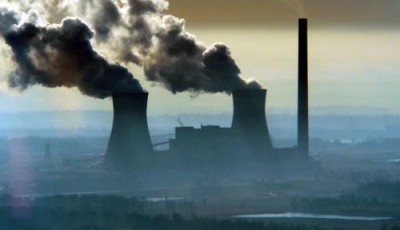Doubled raw materials use is climate risk
By Alex Kirby
LONDON, 24 October, 2018 − Just when you might think the world has heard an unmistakable warning of the need to curb climate change drastically and fast, along comes another warning, about humans’ voracious appetite for the raw materials we use so profligately.
Its message is simple: one of the main causes of the Earth’s growing warmth is likely to be twice as severe 40 years from now as it is today.
This latest warning, from the club of the world’s richest countries, the Organisation for Economic Co-operation and Development (OECD), says consumption of raw materials is on course to nearly double by 2060 as the global economy expands and living standards rise.
And that will mean a steep increase in emissions of the greenhouse gases which drive global warming. Total emissions are projected to reach 75 gigatonnes (Gt) of carbon dioxide equivalent (CO2-eq.) by 2060, of which materials management would constitute about 50 Gt CO2-eq. A gigatonne is a thousand million tonnes. Gt CO2eq is an abbreviation for “gigatonnes of equivalent carbon dioxide”, a unit based on the global warming potential of different gases.
“More than half of all greenhouse gas emissions are related to materials management activities”
If you find it hard to visualise raw material, the OECD offers some helpful examples. The main sort of “stuff” it’s talking about includes the building blocks of the modern world: sand, gravel and crushed rock. Metals are next, and third is coal. It uses a disarmingly wide image to bring the message home: “The total raw materials consumed by an average family in a day would fill up a bathtub”.
The full OECD report, the Global Material Resources Outlook to 2060, will be available from 27 November, but a preview was released this week at the World Circular Economy Forum in Yokohama, Japan.
The Outlook expects global materials use to rise from 90 gigatonnes (GT) today to 167 GT in 2060, because of the increase in world population to 10 billion people expected by then, and the rise in average global income per capita to converge with the current OECD level of US$40,000 (€34,900).
Immense human footprint
The projected figures are immense. But so are those that quantify today’s hunger for materials. Scientists calculate, for instance, that the weight of objects made by humans is about 30 trillion tonnes, and that by 2050 we shall have built another 25 million km of roads, enough to circle the Earth 600 times. None of this bodes well for us, let alone for the other species that share the planet.
Without action to address these challenges, the projected increase in the extraction and processing of raw materials such as biomass, fossil fuels, metals and non-metallic minerals is likely to worsen the pollution of air, water and soils, and contribute significantly to climate change, the OECD says.
This increase will happen despite both a shift from manufacturing to service industries and continual improvements in manufacturing efficiency, which has lessened the amount of resources consumed for each unit of GDP.
Without this, it says, environmental pressures would be even worse. The projection also acknowledges flattening demand in China and other emerging economies as their infrastructure booms end.
Coal boom
The preview report says the biggest rises in resource consumption will be in minerals, including construction materials and metals, particularly in fast-growing developing economies. The OECD projects a big increase in coal consumption by 2060, but a much smaller increase for oil.
Its overall conclusion on the impact of materials use on climate change is bleak: “More than half of all greenhouse gas (GHG) emissions are related to materials management activities. GHG emissions related to materials management will rise to approximately 50 Gt CO2-equivalent by 2060.”
The report’s global environmental impact analysis of the extraction and production of seven metals (iron, aluminium, copper, zinc, lead, nickel and manganese) plus building materials − concrete, sand and gravel − also shows significant impacts in areas like acidification, air and water pollution, energy demand, human health and the toxicity of water and land. − Climate News Network







